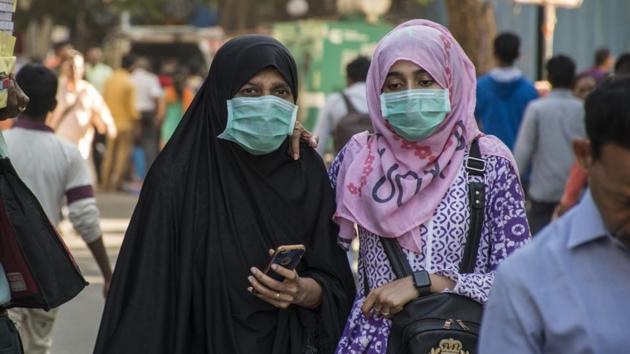Epidemic of fear and panic about CoVID-19
Whether a city manages to ride out an epidemic with minimum loss depends partly on its good fortunes, partly on its administrators who manage information and health networks, and partly on its citizens
Few situations test the resilience, efficacy and flexibility of a city’s institutional architecture, especially its public health system, as a fast-spreading fear-invoking epidemic like the coronavirus or CoVID-19. Cities, after all, are potential hotbeds of epidemics given their large populations, public transit systems, and uncontrollable person-to-person interactions.

Whether a city manages to ride out an epidemic with minimum loss depends partly on its good fortunes, partly on its administrators who manage information and health networks, and partly on its citizens. Wuhan, the Chinese city where the virus caused maximum havoc in December-January was tagged “an unprepared city” by researchers of Hong Kong University. How is it looking in Mumbai, the gateway for international travellers, a city with super-dense population and an over-burdened public health system where two people tested positive?
Let’s just say panic is an epidemic already. Municipal commissioner Praveen Pardeshi is on record that all efforts are on to prevent an outbreak of CoVID-19 in the city. Staff of civic and private hospitals have screened more than 1,75,000 international passengers so far which is how the group that visited Dubai in late February – two of whom from Pune tested positive – was sifted out. The state government has provided for isolation beds, quarantine facilities and ventilators.
However, there aren’t effective ways to screen local citizens or determine how many suspected citizens may have come into contact with and where. It boils down to self-reporting and/or alert and conscientious neighbourhood general practitioners that people usually approach with symptoms of flu. The alacrity with which the public health system responds to such a situation could make the difference between a few isolated cases or an epidemic spinning out of control as did the deadly Spanish Flu or Bombay Fever 102 years ago. From the docks and ports to the mills and offices, it claimed a staggering 1,600 lives in less than three weeks of June-July 1918.
It’s a no-brainer that verified information spread ultra-fast can make all the difference at such times for panic is the default response of people. Mumbai’s pharmacies and clinics have run out of masks and hand sanitisers, Mumbaiites are sharing all sorts of half-baked cures on social media groups, myths and rumours are taking the place of information, central government minister Ramdas Athawale organised a morcha to shout “Go Corona, Corona Go” for it to recede (well, we won’t die of humour), and there are discussions about gau-mutra and gobar to prevent CoVID-19. The only antidote to such madness is clear and succinct information in multiple languages. It helps to contain panic, rumours and half-baked cures.
The management of information and early outbreak form the intervention that the US Center for Disease Control and Prevention termed as essential for “flattening the curve”. Without adequate intervention, an outbreak will peak quickly leading to a sharp spiky curve of its path overwhelming the health system; with appropriate intervention, the rise in number of cases will happen over a longer period making the curve flatter and, more importantly, will remain within a system’s capacity. Mumbai administrators’ attempts, if cases are detected, must be to keep the curve as flat as possible.
There is an enormous body of literature – medical and academic – that throws light on various aspects of the urban life and spread of epidemics including natural defences in cities and how they make a difference, the pattern of spread of an epidemic, why some cities are safer or more resistant than others, relationship between standard hygiene and epidemics, crowds and fast spread of pathogens, information protocols in such situations and so on.
The extreme step is to severely restrict all movement within a city or shut it down. Who can forget those photographs of Wuhan’s neighbourhoods in January that resembled ghost-towns? Cities in Italy and Iran are in lockdown. Mumbai will, hopefully, not be in this list if all of us play our part. How well prepared Mumbai is depends on who you ask. The administration must do its job but let’s take due precautions like frequently washing hands, not sneezing or coughing without protection, self-quarantining if the need arises, not spreading myths and unverified information. Prepare but do not panic, dear Mumbaiites.




